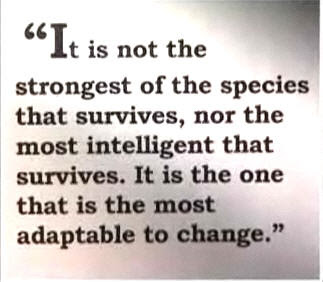Yeah, it’s all charismatic megafauna, but I’ll still see it (in theatres for Earth Day, Apr 22).
Category Archives: Media
Genetic horoscope.
An ad in the Toronto Star:
 CTV Winnipeg has also reported on this.
CTV Winnipeg has also reported on this.
At the business website, they suggest:
DNA Disease Test can Indicate following Diseases:
Heart Health, Antioxidation, Bone Health (Osteoporosis), Abdominal aneurysm, Alzheimer’s disease, Atrial fibrillation, Rheumatoid arthritis, Psoriasis, Breast cancer, Celiac disease, Colon cancer, Crohn’s disease, Diabetes type 2, Glaucoma, Graves’ disease, Heart attack, Lung cancer, Lupus, Macular degeneration, Multiple sclerosis, Obesity, Osteoarthritis, Prostate cancer, Restless legs syndrome
This grabbed my attention:
What is DNA?
DNA can be called the blueprint for life. All living things contain DNA. For humans, DNA comes from genetic material passed on from both parents and is present in nearly every cell in the body. With the exception of identical twins, each person’s DNA is unique to them. Therefore, one’s DNA can tell a lot about the person.
What diseases you are predisposed to, what allergies you can have, what drugs are in your system – these are some of the things our centers are able to detect using one’s DNA. DNA evidence is also becoming increasingly popular for use in forensic science, at crime scenes and for use in missing person’s investigations.
They will test you, generate an “ID kit” for your children, even inform you of the breed of your pet.
The most interesting thing is that they themselves call it a “genetic horoscope”. I think that’s about correct.
American self-parody on TV.
We have some very clever political satire in Canada, most notably This Hour Has 22 Minutes, the Rick Mercer Report, and formerly the Royal Canadian Air Farce. None of these shows could do a sketch like this because Canadians would find the parody of Americans too unkind.
Here is how Rick Mercer portrays our defensive status due to our proximity to the USA.
Would you act as a consultant on a scifi movie?
Last week in my first year seminar course “Controversial issues in the life sciences” we watched Jurassic Park and discussed a series of questions about the science included, the portrayal of scientists, and various other issues. This was interesting, because most of the people in the course are not biology majors but had done a good job learning about cloning, genetic engineering, and other topics during the semester. (This was also a nice break from giving weekly presentations, I am sure).
Anyway, as part of the discussion we also read several papers about science in movies. One of them by Kirby (2003) is about scientists as consultants for Hollywood productions. As I was reading it, I thought to myself, “I would probably do it, but not for personal payment — if they funded my research that would be ok”. Then, on the following page, I read:
Based on the available evidence, science consultants are far more likely to accept research funds, or no compensation at all, rather than actual payment for their services. One of the reasons for this situation is the unwillingness of scientists to take money for what they consider a “public service.†Many of the consultants I researched felt it was their “duty†as a scientist to impart knowledge to an uneducated public, including filmmakers, and that it would have been “unethical†for them to take money for this activity. For example, two of the consultants for the 1922 gland-based horror film A Blind Bargain(1922) felt that it would be “disreputable†for “medical researchers†to accept payment for their services, and they even requested that their names not be included in publicity material (see Riley, 1988).Likewise, Donald Francis of Genentech, Inc., who is most famous for his work on an AIDS vaccine, refused financial payment for his work as technical adviser for the film Outbreak(1995), accepting as compensation “only that his 17-year-old son, Oli, be allowed to observe the filming†(see Ganahl, 1995: 1E). Francis’ example underscores the conflict that science consultants face. On the one hand, they believe that as scientists they should give scientific advice freely to anyone who seeks knowledge. On the other hand, they are providing a specialized service for filmmakers and believe they should receive compensation of some type. To resolve this tension, consultants have come up with other forms of compensation that do not involve direct financial payment. In this regard, consultants who accept research funds rather than salary or consultation fees perceive that this action does not compromise their “ethics,†because the money will not go into their pockets but will go toward the production of “new knowledge.â€
Science is an intriguing culture, no question.
____________
Kirby, DA (2003). Science on the set: science consultants and the communication of science in visual fiction. Public Understanding of Science 12: 261-278.
"Everlasting antibiotics", wanna bet?
From Albert Einstein College of Medicine in New York (and several news services):
Einstein Researchers Develop Novel Antibiotics That Don’t Trigger Resistance
Most antibiotics initially work extremely well, killing more than 99.9% of microbes they target. But through mutation and the selection pressure exerted by the antibiotic, a few bacterial cells inevitably manage to survive, repopulate the bacterial community, and flourish as antibiotic-resistant strains.
Vern L. Schramm, Ph.D., professor and Ruth Merns Chair of Biochemistry at Einstein and senior author of the paper, hypothesized that antibiotics that could reduce the infective functions of bacteria, but not kill them, would minimize the risk that resistance would later develop.
Dr. Schramm’s collaborators at Industrial Research Ltd. earlier reported transition state analogues of an enzyme that interferes with “quorum sensing” — the process by which bacteria communicate with each other by producing and detecting signaling molecules known as autoinducers. These autoinducers coordinate bacterial gene expression and regulate processes — including virulence — that benefit the microbial community. Previous studies had shown that bacterial strains defective in quorum sensing cause less-serious infections.
Rather than killing Vibrio cholerae and E. coli 0157:H7, the researchers aimed to disrupt their ability to communicate via quorum sensing. Their target: A bacterial enzyme, MTAN, that is directly involved in synthesizing the autoinducers crucial to quorum sensing. Their plan: Design a substrate to which MTAN would bind much more tightly than to its natural substrate — so tightly, in fact, that the substrate analog permanently “locks up” MTAN and inhibits it from fueling quorum sensing.
To design such a compound, the Schramm lab first formed a picture of an enzyme’s transition state — the brief (one-tenth of one-trillionth of a second) period in which a substrate is converted to a different chemical at an enzyme’s catalytic site. (Dr. Schramm has pioneered efforts to synthesize transition state analogs that lock up enzymes of interest. One of these compounds, Forodesine, blocks an enzyme that triggers T-cell malignancies and is currently in a phase IIb pivitol clinical study treating cutaneous T-cell leukemia.)
In the Nature Chemical Biology study, Dr. Schramm and his colleagues tested three transition state analogs against the quorum sensing pathway. All three compounds were highly potent in disrupting quorum sensing in both V. cholerae and E. coli 0157:H7. To see whether the microbes would develop resistance, the researchers tested the analogs on 26 successive generations of both bacterial species. The 26th generations were as sensitive to the antibiotics as the first.
“In our lab, we call these agents everlasting antibiotics,” said Dr. Schramm. He notes that many other aggressive bacterial pathogens — S. pneumoniae, N. meningitides, Klebsiella pneumoniae, and Staphylococcus aureus — express MTAN and therefore would probably also be susceptible to these inhibitors.
Ok, here we go. How big was the population size tested? How much is 26 generations in bacterial timescales? Let’s think about this. One person taking antibiotics would have billions of bacteria in his/her gut. A week on antibiotics is about 350 generations if you consider 30 minutes per.
How about the possibility of a new mutation or lateral transfer from some other species? Yes, selection may result in resistance easily in bacteria if some individuals already carry a resistance gene, but I would never bet against some mutation occurring down the line and leading to a reproductive advantage — they don’t have to survive while all others are killed for selection to occur and therefore for the new resistant trait to increase rapidly in proportion. Natural selection is about relative reproduction, not necessarily survival alone.
Selection at several levels (New Scientist).
Not a good title (I know, probably not decided by the author), but overall a good piece on selection at multiple levels.
Science journalism and recent human evolution: Moran vs. Hawks.
Larry Moran and John Hawks have engaged in an interesting debate on their respective blogs. The disagreement revolves around an article by Kathleen McAuliffe in Discover. The article describes Hawks and colleagues’ 2007 report of substantially accelerated selection in humans following the agricultural revolution and related explosion of population size. It’s important to draw a distinction between the data and the reporting thereof, as I have tried to do previously when I complained about Hawks et al.’s descriptions of their work in popular articles. Anyway, have a look at the two posts and the original article and see what you think about this.
New Scientist cover misused, as predicted.
From The Guardian UK:
“I am guided ultimately by the parameters that the Bible lays down,” admits John Peet, travelling secretary of the Biblical Creation Society. He estimates that 90% of the congregation at the Cherts
ey Street baptist church in Guildford, where he worships and where I hear him address the “creation club”, are young earthers. The theme of pastor John Benton’s sermon in the evening is “Genesis and Evolution: Do They Fit Together?” He holds up a recent New Scientist cover, headlined “Darwin was wrong,” as evidence that the scientific base for evolution is crumbling, that the Darwinian tree of life can be uprooted.
Mackay, too, is clutching a copy of that issue of New Scientist when I meet him. This is manna from heaven – the science establishment offering up gifts to the creationists. They also claim that the aggression of the new atheists is helping them. They paint Dawkins as a “recruiting sergeant” for creationism because he links evolutionary thinking with atheism. “He has been a real help to the ministry, ” says Randall Hardy.
Big surprise.
BioBus on Discovery Channel.
My colleague Alex Smith of the Biodiversity Institute of Ontario and Nick Jeffery, currently an undergraduate project student in my lab, were featured on tonight’s Daily Planet. Why? Because they ride around in the BioBus!

See the clip here (their segment starts at 13:05).
Note: the segment before theirs, which begins at 8:55 and includes Sean Carroll, refutes the myth about Darwin’s finches instigating his evolutionary views (replacing them with mockingbirds), but presents an apparently misattributed “Darwin quote”.

